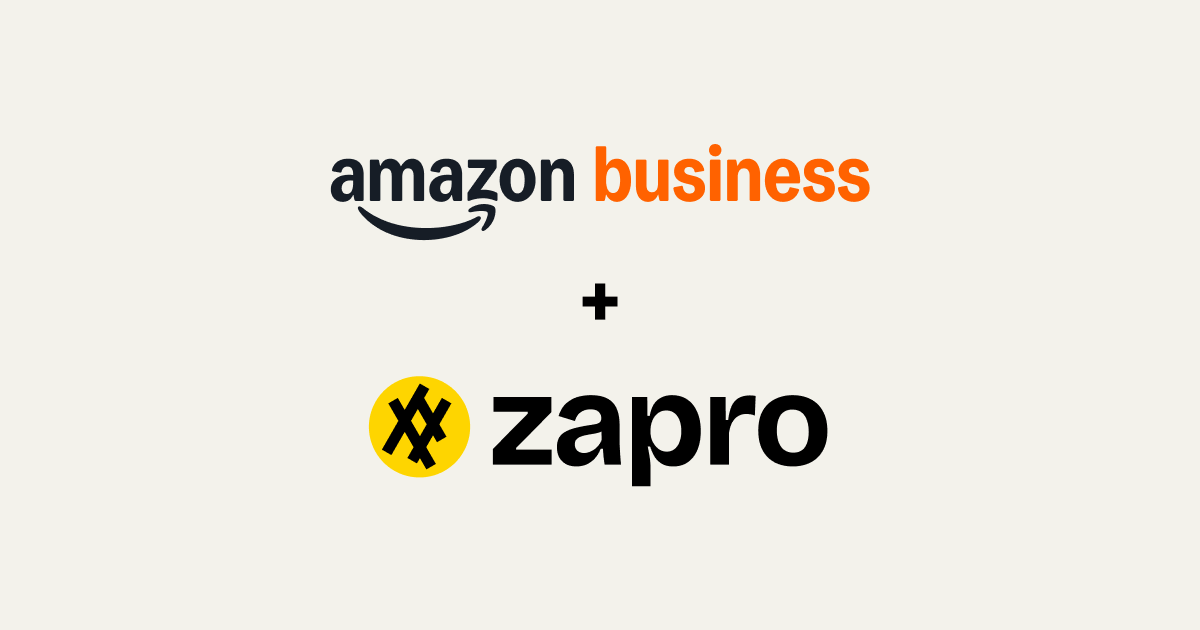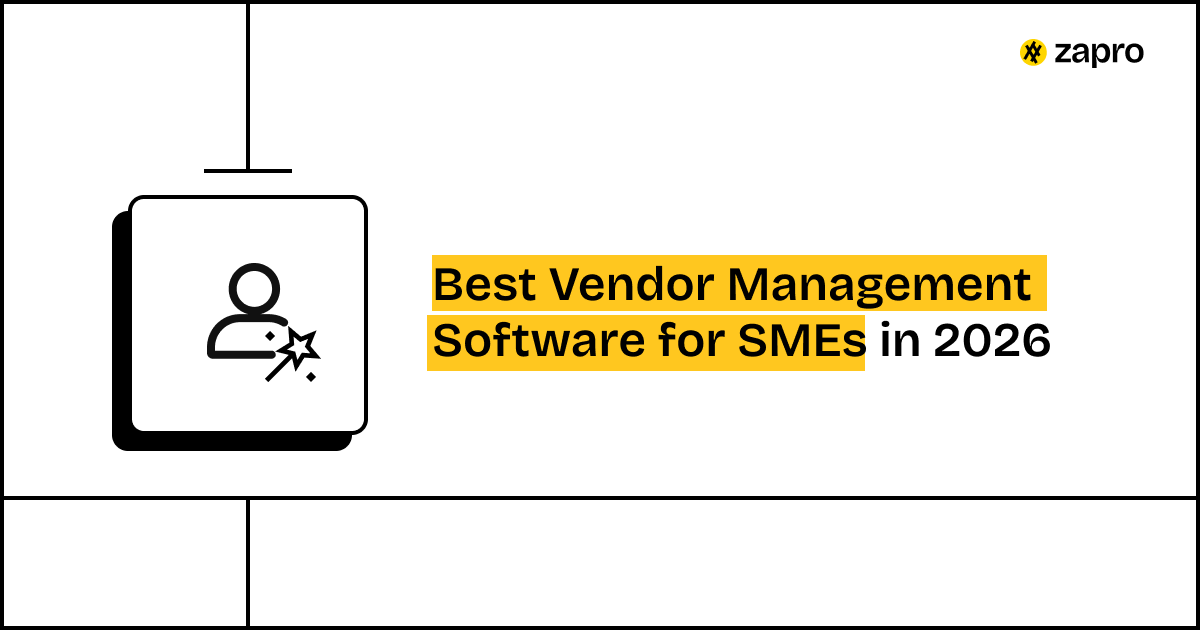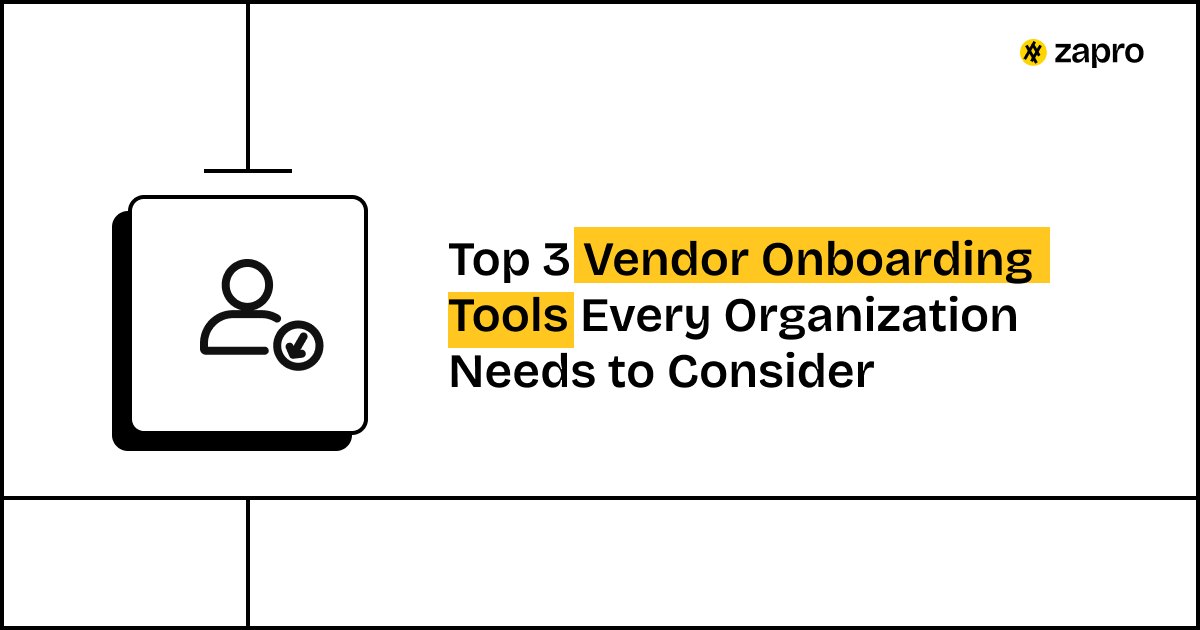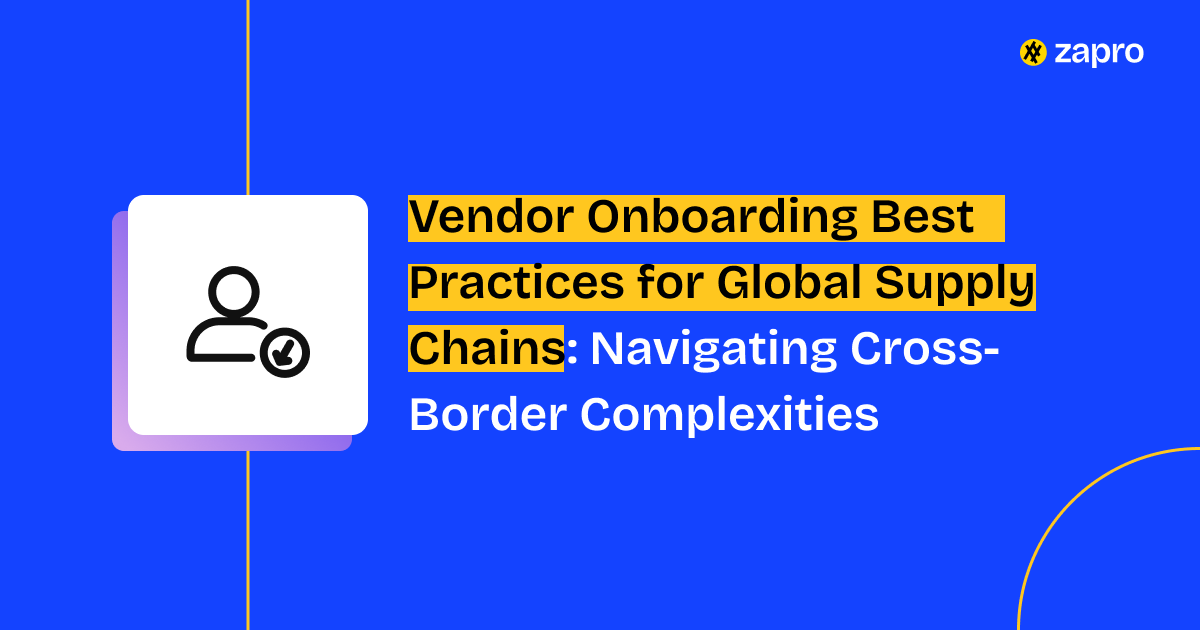Vendor management has become a very essential requirement for businesses in 2025. Organizations must adopt better vendor management solutions because their supply chains have become more complex and regulatory requirements have become more stringent. The centralization of vendor onboarding and contract management and performance tracking and payment processing becomes possible through Vendor Management Software (VMS).
Most small to medium enterprises require affordable user-friendly solutions yet large businesses demand systems that scale and automate operations with enhanced compliance functionality.
This guide assesses the top vendor management software solutions for small and medium enterprises and large businesses during 2025 to assist you in selecting appropriate solutions for your organization.
What is vendor management software (VMS)?
A vendor management software (VMS) operates as a digital system which enables businesses to handle their entire vendor relationship cycle through a unified platform. The main function of VMS systems enables businesses to handle supplier selection and onboarding and monitoring and payment processes while maintaining internal policy compliance and external regulatory requirements.
Why SMEs and enterprises need vendor management software
The necessity of vendor management software exists for organizations at every scale, but the reasons for implementation vary according to business size.
For SMEs:
- The system enables organizations to monitor their expenses, resulting in better cost management.
- The system streamlines procurement operations, enabling organizations to reduce their time and work requirements.
- The system enables fast vendor onboarding, which helps organizations establish quick supplier connections.
For enterprises:
- The system should definitely enable businesses to handle vendor management operations for numerous suppliers across entirely different geographic areas.
- The system should definitely automate processes like handling invoices, workflow approvals, plus also payment processing.
- The system also gives you very advanced capabilities to monitor risks and accurately track compliance requirements.
- The system supports organizations that need to handle complex multi-vendor agreements.
Organizations will obviously continue to adopt VMS technology at an increasing rate until 2025 because they seek operational efficiency and business stability.
The global vendor management software market will expand through 2025 because organizations need automated systems and AI-based analytics and regulatory compliance features.

Gartner also notes that many vendors are incorporating machine learning and AI to support automated assessment and analysis, and refine future recommendations and impact analysis with appropriate disclosures and human review.
– Gartner
Essential features of vendor management software in 2025
The 2025 edition of VMS requires organizations to evaluate specific essential features.
The selection of vendor management software requires organizations to move past fundamental requirements. The business world of 2025 demands VMS platforms which provide automated systems with intelligent capabilities and complete system integration. The essential features for your VMS system should include these fundamental elements:
1. Automation capabilities
The system needs to perform automatic vendor onboarding and invoice processing operations. The system should implement workflow approval functions to decrease human mistakes and increase operational efficiency.
2. Integration support
The VMS system needs to establish seamless connections with ERP systems and CRM platforms and accounting software for complete data management.
3. Risk management & compliance tracking
The system tracks supplier performance while monitoring regulatory compliance and detects potential risks before they become major issues.
4. Analytics & reporting
Real-time dashboards together with detailed reports will enhance decision-making abilities and assist organizations in discovering cost-saving potential.
5. AI-powered supplier insights (2025 trend)
The system uses artificial intelligence to forecast supplier risks and evaluate market patterns and suggest vendors according to their performance and dependability metrics.
Learn about Vendor Business Reviews.
Best vendor management software for SMEs and enterprises in 2025
The selection of vendor management software requires organizations to consider their business dimensions and operational objectives and current operational processes. businesses by showing their main capabilities and suitable applications.
The following evaluation presents the top solutions for 2025 which serve both small and medium and large enterprises.
1. Zapro
The AI-based vendor management platform Zapro integrates all vendor management functions through a unified dashboard which handles onboarding and approvals and vendor communication and contract management and purchase order tracking. The software enables non-technical teams to create workflows through its zero-code setup which allows them to deploy the system without needing IT assistance.
Why and how Zapro stands out for SMEs and enterprises
- For SMEs: Zapro keeps things simple and affordable. Its intuitive workflows, quick setup, and automation reduce administrative overhead, helping smaller teams focus on growth instead of paperwork.
- For enterprises: The platform enables multi-level approval processes and AI-based analysis and sophisticated compliance monitoring which provides big organizations with both management capabilities and adaptability beyond what basic enterprise solutions can offer.
Key features
- Zero-code setup for non-technical teams
- Quick deployment, eliminates manual work
- Unified vendor lifecycle management
Pros: Easy to deploy, reduces manual processes
Cons: Advanced feature limits not specified
Pricing: From $299/month for SMBs, custom for enterprises
2. SAP Fieldglass
SAP Fieldglass operates as a complete VMS solution that specializes in managing external workforce and services vendors at an advanced level. The system provides excellent integration with SAP systems which makes it suitable for organizations operating within the SAP environment. The system delivers exceptional performance when dealing with extensive vendor networks and complex compliance management systems.
Key features:
- Advanced external workforce management
- SAP-native integration
- Compliance-focused vendor management
Pros: Ideal for large, global organizations
Cons: Complex for smaller businesses
Pricing: Enterprise, custom
Join the Future of Vendor Management

3. Coupa
Coupa leads the market in cloud spend management solutions while delivering robust vendor management features through its complete platform. The system allows users to complete onboarding processes and monitor risks and track supplier performance and generate analytical reports.
The source-to-pay platform integration of Coupa makes it suitable for organizations that require complete spend management control and unified procurement operations.
Key features:
- Onboarding and supplier performance monitoring
- Risk tracking and analytical reports
- Integrated source-to-pay control
Pros: Unified procurement + spend visibility
Cons: Premium platform; modular costs
Pricing: Custom
4. GEP SMART
The GEP SMART platform unites procurement functions with sourcing capabilities and contract management and vendor relationship management under one unified system. The system delivers exceptional performance in large-scale enterprise operations through its adaptable analytics platform and team collaboration features and ability to expand.
The platform structure enables businesses to select VMS functionality while using additional procurement functionality.
Key features:
- Analytics-driven, adaptable for enterprises
- Unified procurement functions
- Collaboration and scalability
Pros: Strong for large-scale operations
Cons: Enterprise complexity, cost premium
Pricing: Custom
Learn more about Gatekeeper Alternative.
5. Oracle Procurement Cloud
The Oracle Procurement Cloud platform features vendor management alongside sourcing and contract lifecycle management and supplier qualification and analytics capabilities. The system provides excellent integration with Oracle systems which makes it suitable for businesses operating within the Oracle environment.
The platform enables organizations to handle sophisticated supplier connections and maintain regulatory compliance while automating worldwide business operations.
Key features:
- Supplier qualification and analytics
- Compliance and automation
- Global operations support
Pros: Excellent for Oracle ecosystem users
Cons: Limited appeal outside Oracle systems
Pricing: Custom, license-based
6. Zycus
Zycus provides a procurement platform that contains separate modules for vendor onboarding and risk and compliance management and contract administration and spend analysis. The system uses artificial intelligence to generate predictive insights and automated processes which include sourcing recommendation and risk notification systems. The system provides optimal performance for organizations with procurement intelligence needs in mid-to-large enterprise settings.
Key features:
- Predictive insights and sourcing recommendations
- Automated risk notifications
- Strong compliance tools
Pros: Tailored for mid-to-large enterprises
Cons: Needs professional setup and training
Pricing: Custom
7. Workday Strategic Sourcing
The vendor management features of Workday’s procurement and sourcing modules include supplier information management and onboarding and performance tracking functions. The vendor management features of Workday function optimally for organizations that currently operate within its existing ecosystem.
Key features:
- Vendor onboarding and scorecards
- Supplier performance monitoring
- Works best inside Workday ecosystem
Pros: Great fit for Workday customers
Cons: Limited standalone flexibility
Pricing: Custom
8. Jaggaer
Jaggaer operates as a comprehensive procurement and supplier management platform which supports complex supply chain operations. The system includes separate modules which handle supplier enrollment and performance assessment and contract and risk oversight and team collaboration.
The VMS provides excellent support to organizations with demanding compliance requirements and extensive supplier base management.
Key features:
- Supplier enrollment and performance assessment
- Contract and risk oversight
- Collaboration modules
Pros: Extensive compliance support
Cons: Complex setup, consulting-heavy
Pricing: Custom
9. Precoro
The procurement and spend management solution Precoro provides its processes and purchase order tracking and invoice management and vendor performance dashboard monitoring. The platform suits organizations that require services to small and medium enterprises and businesses that experience growth.
The system enables vendor registration and automated approval of an easy-to-use affordable procurement solution with minimal complexity.
Key features:
- Purchase order and invoice management
- Vendor performance dashboards
- Affordable and simple for SMEs
Pros: Easy-to-use, affordable for growing SMEs
Cons: Limited features for enterprises
Pricing: $499–$999/month (SMEs); custom for enterprises
10. Kissflow Procurement
Kissflow Procurement integrates procurement and vendor management operations within a single platform. Kissflow gives vendors with factors like self-registration capabilities and supports onboarding processes,contract management and performance assessment through scorecards.
Users should appreciate the system; because it allows them to create super-personalized workflows while also maintaining a very user-friendly interface.
Key features:
- Vendor self-registration
- Onboarding and contract management
- Performance assessment via scorecards
Pros: User-friendly, flexible workflow setup
Cons: Limited automation for large enterprises
Pricing: From $690/month, custom
11. Gatekeeper
The platform Gatekeeper handles vendor lifecycle management through its features for contract automation and supplier onboarding and performance tracking and compliance management.
The platform delivers maximum value to organizations handling complex contracts because it provides automated alert systems and version management and audit trail functionality.
Key features:
- Automated contract alerts and version control
- Audit trail functionality
- Supplier onboarding and tracking
Pros: Strong for complex contract-heavy orgs
Cons: High initial learning curve
Pricing: Essentials $1,245/mo; Pro $2,995/mo; Enterprise $5,295/mo
12. Kodiak Hub
Kodiak Hub operates as a cloud-based vendor management platform which combines modular design with artificial intelligence analytics and risk assessment capabilities. The system unifies supplier information into dashboard views while performing automated onboarding and monitoring performance and compliance metrics and enabling supplier interaction support.
The platform has started to gain popularity because it includes sustainability and ESG tracking capabilities.
Key features:
- Automated onboarding and compliance monitoring
- Supplier dashboards with risk evaluation
- ESG and sustainability tracking
Pros: Growing popularity, strong ESG focus
Cons: Limited automation; unclear pricing
Pricing: Custom
Learn more about QuickBooks Online Alternative.
Vendor management software for SMEs and enterprises: comparison table (2026)
| Platform | Overview | Key Features | Pros | Cons | Pricing |
| Zapro | The solution provides AI-based procurement automation for full-cycle vendor management that enables both small businesses and large enterprises to implement quick deployment and real-time performance tracking. | The solution will be able to deliver a top class AI-based procurement automation that can handle your complete vendor management cycles to support super-fast implementation and also immediate performance monitoring for businesses of all sizes. | Intuitive, fast implementation, scalable, real-time insights | New to large enterprise, requires premium for some features | Custom; starts ~$299/month SMB |
| SAP Fieldglass | The system includes enterprise-grade VMS features which enable management of contingent workers and supplier portals and compliance automation and worldwide operations. | The system includes source-to-pay automation and AI spend analytics and audit logs and supplier portal functionality. | The system enables worldwide teamwork and supports strict regulatory requirements and delivers advanced analytical capabilities. | High cost, complex setup, learning curve | Custom, enterprise pricing |
| Coupa | Unified, AI-driven platform for spend management, procurement, and supplier portals for mid/large enterprises. | Real-time spend insights, fraud alerts, vendor portal, benchmarking | Strong analytics, wide integration, community intelligence | Pricey, some features as add-ons | Custom, variable by scale |
| GEP SMART | End-to-end, AI-powered procurement and supplier relationship suite for global organizations. | Deep analytics, risk scoring, negotiation AI, built-in dashboards | Financial health monitoring, predictive analytics | Complex implementation, premium pricing | Custom, enterprise pricing |
| Oracle Procurement Cloud | Enterprise-grade, deeply integrated procurement automation for Oracle users. | Deep ERP integration, AP automation, recurring billing, policy enforcement | Seamless for Oracle stack, robust workflow automation | Locked to Oracle ecosystem, setup complexity | Custom, varies by license |
| Zycus | Modular procurement suite with strong AI analytics and regulatory support for enterprise sourcing. | Spend analytics, AI risk scoring, flexible configuration | High configurability, comprehensive sourcing | Needs expert setup, learning curve | Custom, enterprise pricing |
| Workday Strategic Sourcing | Cloud-based strategic sourcing platform focused on supplier collaboration and spend analytics. | Supplier onboarding, RFx automation, real-time benchmarking | Intuitive and easy, strong reporting | Best for mid/large; limited for small teams | Custom pricing |
| Jaggaer | AI-powered source-to-pay platform with workflow automation, analytics, and supplier management. | Category mgmt, supplier scoring, e-procurement, contract automation | Customizable, comprehensive analytics, ERP integration | Complex, price undisclosed, limited partners | Custom, enterprise |
| Precoro | Cloud solution for centralized procurement; fast approvals, integrations, mobile access, and analytics. | PO, invoice, budget, spend analysis, approval workflow | Affordable entry, intuitive, quick support | Feature set best for SMBs, limited deep analytics | $499–$999/month, custom enterprise |
| Kissflow Procurement | Adaptable cloud procure-to-pay solution; automates up to 80% of manual tasks and supports vendor portals. | Vendor onboarding, catalog mgmt, real-time analytics | User-friendly, customizable, actionable insights | Limited automation depth | Custom, from $690/month |
| Gatekeeper | Full-suite contract and vendor management platform with flat-rate pricing and unlimited users. | Contract automation, risk analytics, scalable supplier mgmt | Unlimited users, powerful automation, scalable | High entry price, may be complex for SMBs | Essentials $1,245/mo, Pro $2,995/mo, Enterprise $5,295/mo |
| Kodiak Hub | Intuitive SRM for performance metrics, risk analysis, and collaboration; modular and easy to scale. | Workflow mgmt, risk reporting, supplier data, audit, analytics | User-friendly, customizable, actionable dashboards | Limited deep automation, pricing opaque | Custom, quote-based |
How to choose the right vendor management software for SMEs and enterprises
A business needs to follow specific steps to select the appropriate VMS system. The selection of vendor management tools requires more than just choosing a well-known brand. Your organization needs a VMS solution that matches your business dimensions and operational requirements and future development objectives.
The following process will guide you toward making an assured selection.
Step 1: Assess your procurement workflow
Your business needs to create a diagram of its present vendor onboarding procedures and contract approval processes and payment systems and regulatory compliance systems. The assessment process reveals operational weaknesses that a VMS system needs to address.
Step 2: Define business-specific requirements
The selection process for tools requires you to establish fundamental requirements which match the basic needs of small to medium enterprises while meeting the advanced automation and complete compliance needs of large enterprises. Your selection process requires a list of fundamental requirements to determine which tools best match your needs.
Step 3: Compare costs vs. scalability
The initial costs should not be evaluated against the system’s ability to expand. The initial cost of a tool does not guarantee future adaptability because it might restrict your growth potential. The evaluation process should include examination of subscription fees and user restrictions and vendor base expansion cost projections.
Step 4: Test integrations and usability
The VMS system needs to connect properly with your current ERP and CRM and accounting software systems. The system’s user interface should be easy to use because it reduces training duration and increases user acceptance.
Step 5: Check vendor support and roadmap
A product requires both excellent customer support and a detailed plan for future development. A suitable VMS provider needs to provide dependable onboarding support and maintain a development path that follows industry developments.
Why Zapro is the smarter vendor management software for SMEs and enterprises in 2025
The necessity of vendor management software for 2025 has become essential because it enables organizations to develop better supplier connections and minimize risks while enhancing procurement operations.
The established platforms SAP, Coupa, and Oracle provide powerful capabilities but their complex nature and expensive costs make them impractical for numerous businesses.
Zapro differentiates itself from other solutions because it combines essential VMS features through automation and AI-driven insights and contract management and compliance capabilities without requiring extensive training or IT support. The platform provides zero-code setup and user-friendly workflows at affordable prices which benefits both small and medium enterprises during growth and large businesses that need fast and adaptable solutions.
The evaluation process for the top vendor management software of 2025 should consider Zapro because it delivers both operational efficiency and flexibility to support your business success in today’s dynamic market.

Your Vendors Are Waiting. Are You Ready?
Zapro’s AI-powered platform streamlines vendor onboarding to payment—no more manual tasks. Get started free in under 5 minutes.
FAQs
Q1. Is vendor management software suitable for small businesses?
The majority of VMS platforms exist to serve small and medium enterprises because they provide budget-friendly solutions with simple deployment and fundamental features for vendor registration and contract oversight and payment processing.
Q2. How is VMS different from procurement software?
The purchase-to-pay cycle receives complete coverage from procurement software but VMS systems specialize in vendor relationship management and performance tracking and compliance monitoring.
Q3. Which vendor management tool offers the best AI-powered insights?
The vendor management tool Zapro and Coupa lead the market with their AI-powered features which help users identify supplier risks and discover cost-saving opportunities and optimize vendor performance.
Q4. Can I integrate VMS with ERP and accounting software?
The majority of contemporary VMS platforms enable users to link their systems with ERP and CRM and CRM and accounting platforms for data synchronization between different systems.
Q5. How much does VMS typically cost for SMEs vs. enterprises?
The cost structure for SMEs begins at $10-$30 per user per month and includes flat monthly subscription plans. Enterprise organizations need to negotiate custom pricing for their VMS solutions because their annual costs extend from tens of thousands to multiple thousands based on their size and required features.
Q6. What are the security risks with vendor management software?
The main security threats against vendor management software include data breaches and unauthorized system entry and non-compliance issues. The security features of reliable VMS providers include encryption and access restrictions and scheduled system audits to protect against potential threats.
Don’t miss our weekly updates
We’ll email you 1-3 times per week—and never share your information.
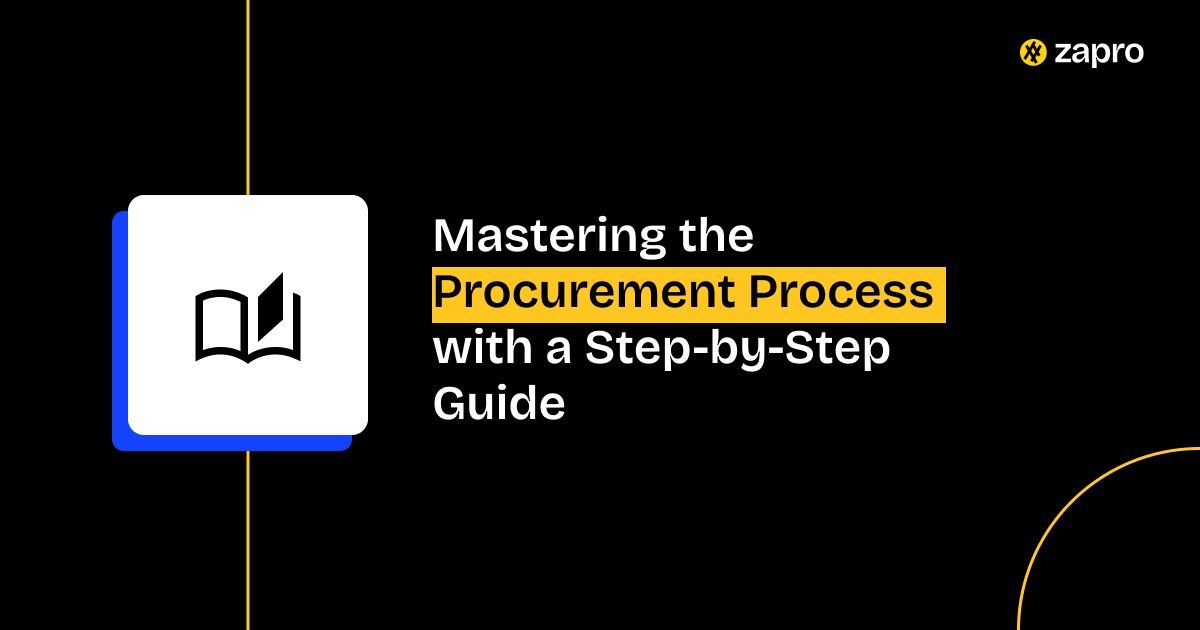
 Healthcare
Healthcare Financial Services
Financial Services Technology
Technology Venture Capitalist
Venture Capitalist Chief Procurement Officer
Chief Procurement Officer Chief Financial Officer
Chief Financial Officer